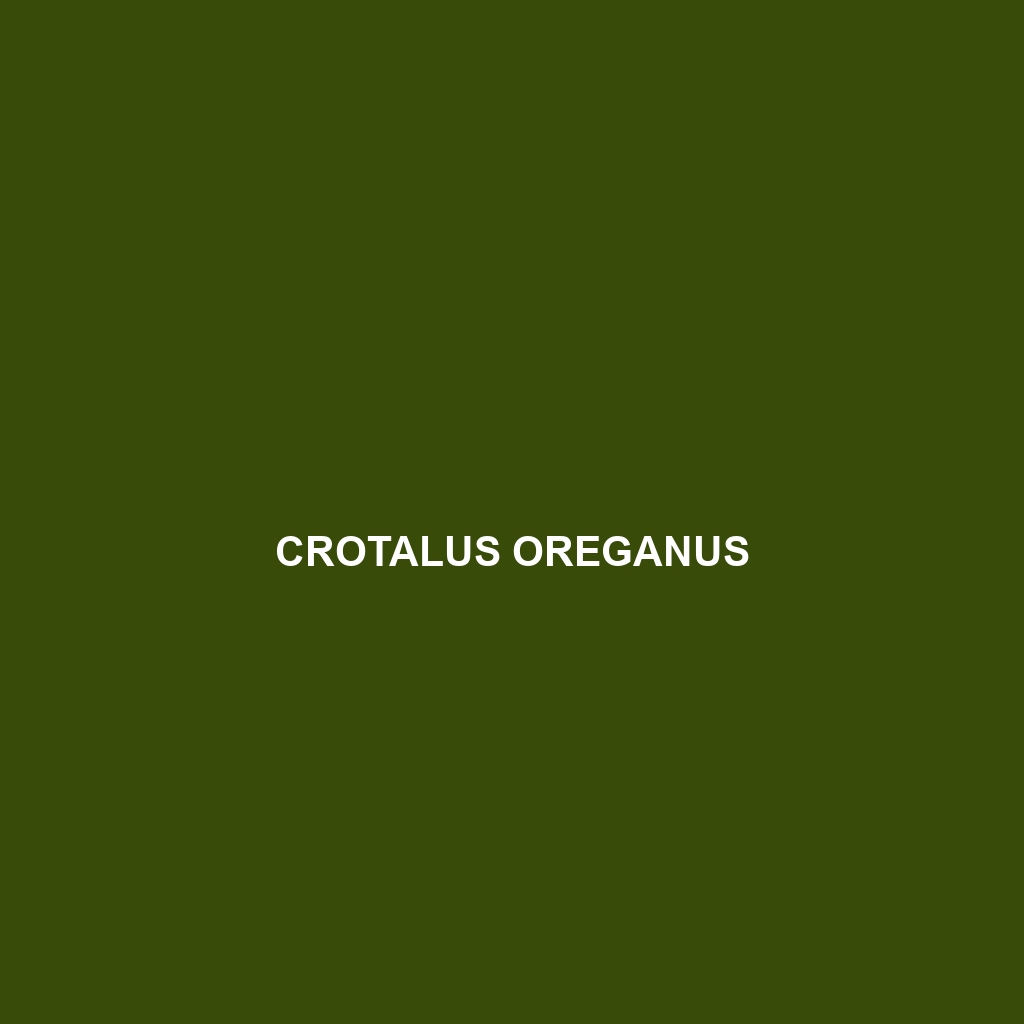Crotalus oreganus: Overview of the Western Rattlesnake
Common Name: Crotalus oreganus
Scientific Name: Crotalus oreganus
Habitat
The Crotalus oreganus, commonly known as the Western Rattlesnake, is primarily found in the western United States, ranging from California to Montana, and extending into parts of Canada and Mexico. This species favors a variety of habitats including deserts, grasslands, forests, and rocky terrains. They thrive in dry, warm environments and can often be found basking on sunlit rocks or hiding in crevices.
Physical Characteristics
Crotalus oreganus can grow to a length of 3 to 5 feet, with some individuals reaching up to 7 feet. Their coloration typically varies from light tan to olive green, adorned with dark brown or reddish-brown bands. One of their distinctive features is the rattle at the end of their tails, which they use as a warning signal to potential threats. Their triangular heads are prominent, equipped with heat-sensing pits that aid in hunting.
Behavior
This species is primarily crepuscular, meaning they are most active during dawn and dusk. Western Rattlesnakes are generally solitary animals, preferring to hunt and live independently. They exhibit defensive behaviors such as coiling and rattling when threatened. Additionally, they have the ability to camouflage effectively within their environment, allowing them to ambush prey.
Diet
Crotalus oreganus is carnivorous, primarily feeding on small mammals such as rodents, rabbits, and birds. They are ambush predators, using their keen sense of smell and heat-sensing capabilities to detect prey. Additionally, they may also consume other reptiles, providing a diverse diet that contributes to their adaptability within various habitats.
Reproduction
The breeding season for Crotalus oreganus typically occurs in the spring, with females giving birth to live young in late summer or early fall. A single litter can consist of 5 to 25 young snakes, which are born fully formed and independent. Females exhibit maternal care by coiling around their offspring during their first few hours after birth.
Conservation Status
Currently, Crotalus oreganus is listed as Least Concern by the IUCN, though certain populations may be threatened by habitat destruction and human encroachment. Conservation efforts are crucial to maintain their habitats and support their populations, ensuring this species continues to thrive in the wild.
Interesting Facts
Western Rattlesnakes can live up to 20 years in captivity. Interestingly, the rattle does not indicate the age of the snake, as it sheds its rattle segments regularly. Another fascinating aspect is their ability to control their venom levels; they can choose how much venom to inject when they strike, a feature that aids in hunting without wasting valuable venom.
Role in Ecosystem
Crotalus oreganus plays a vital role in its ecosystem as both predator and prey. By controlling rodent populations, they help maintain a balanced food web. They are also a food source for larger predators, such as hawks and coyotes, contributing to the biodiversity of their habitat.
